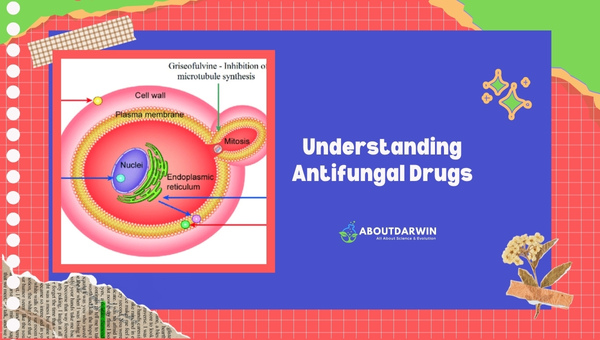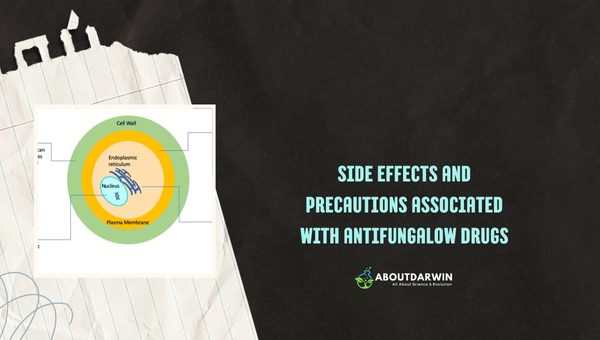Physical Address
304 North Cardinal St.
Dorchester Center, MA 02124
You likely don’t think much about the minuscule fungi you encounter in your daily life. Yet, when these organisms decide to take up residence in or on your body, they can cause some pretty unpleasant issues. From athlete’s foot to yeast infections and beyond, fungi can be persistent invaders. Thankfully, modern medicine has given us a powerful tool to combat them: antifungal drugs.
Yet, while most of us are thankful for these medicinal saviors when a fungal infection comes calling, few people understand how they work. If you’ve ever wondered about the science behind those little pills and creams that keep pesky fungi at bay, then welcome to our journey into understanding the mode of action of antifungal drugs.
Contents
Let me be your guide as we delve into the fascinating world of antifungal drugs. It is a vital theme, yet it often remains veiled in complex scientific terminologies.

So, let’s unwrap the mystery and understand it in plain English!
Antifungal drugs are like super-armed soldiers that come equipped with the right arsenal to combat fungal infections. These harmful beauties can cause havoc, ranging from mild irritations to life-threatening systemic diseases.
Among their lineup are medicines you apply topically—straight onto your skin or mucous membranes—and others that you take orally or intravenously, which go straight to work on systemic fungal infections—those that affect multiple systems in your body. The armory may seem huge, but each tool is custom-tailored for specific battles against these tiny culprits.
Drawing a picture between broad-spectrum antifungals and their narrow-spectrum counterparts could be challenging if you aren’t familiar with them. But not after going through this brief comparison:
| Broad-Spectrum Antifungals | Narrow-Spectrum Antifungals |
|---|---|
| Can treat various types of fungal infections | Best for treating specific types of fungal infections |
| Have the potential for higher side effects due to its wide-ranging function. | Reduced risk of side effects as it targets specific fungi |
| Helps when exact fungus causing infection is unknown. | Beneficial when exact fungus is known. |
| Might lead to resistant strains due to overuse. | Lower chances leading to resistance as it targets fewer organisms |
| It might disrupt helpful bacteria in the body potentially leading to certain conditions like yeast infection. | Less harm done on beneficial microbes due to specificity in action |
Also Read: Acid-Fast Stain Revealed: Unveiling Microbial Secrets
When it comes to battling stubborn fungi, antifungal drugs are our go-to soldiers. But have you ever wondered how these potent pills work their magic? Let’s delve into that today.
The secret behind antifungal drugs’ success lies in their distinctive mode of action. Unlike bacterial infections that invade human cells, fungal infections seek shelter in your body’s exterior layers. Molding itself into the host, these tricky invaders often demand a more innovative approach when it comes to their demise.
That’s where antifungals come in. Operating like silent assassins, they inhibit growth or eradicate fungi by interrupting essential processes within fungal organisms or rendering the external environment unfavorable for fungi survival.
But wait; you may wonder, isn’t this process risky? What if it affects my body cells, too? Herein lies another marvel! The unique makeup of fungus (different from both our cellular structure and – thankfully – invading bacteria) allows antifungals to target them specifically without causing harm to our native cells.
While the mechanisms employed by different types of antifungals can vary widely depending on their chemical composition and target organism, there are three main modes:
Each category has its own set of troops (i.e., specific drugs) trained to attack different fungal strains, traits, and life stages – commanding a wide-ranged offensive that covers all bases. And with this thoughtful strategy in place, we’ve got a fighting chance against those pesky fungi!
Also Read: Sabouraud Dextrose Agar (SDA): Composition, Uses, and More
Before diving into the specifics of how these antifungal drugs work, it’s vital to know that there are different classes of these medications – each class having its unique mode of action.
And while all are geared towards dealing with fungal infections, some prove more effective against certain fungi than others. So, what types are we talking about exactly? Let me break it down for you.
The first class is the Polyenes. Derived from Streptomyces bacteria, this type includes the well-known Nystatin and Amphotericin B drugs.
The primary function of these drugs is to bind with ergosterol – a crucial component of fungal cell membranes – causing leakage in fungal cells and killing them as a result.
Another commonly used class is called Azoles. Azole antifungal medication works by inhibiting a fungus’s ability to synthesize ergosterol, which eventually results in damage to the structure and function of the fungal cell membrane, leading to its death.
Echinocandins are usually prescribed for invasive candidiasis treatment or when other treatments fail or lead to horrendous side effects on patients.
Unlike their counterparts that target the fungus’s protective barrier (cell membrane), Echinocandins obstruct cell wall synthesis, which leads to fungi becoming vulnerable and dying out eventually.
Allylamines, such as terbinafine, work by preventing fungi from producing ergosterol by inhibiting an enzyme known as squalene, effectively depriving these organisms of their vital sterols needed for survival.
It’s key, though, that while all these classes share a common purpose –to kill or inhibit growth- they go about achieving this in distinct manners based on the individual mechanisms incorporated in their design.
Antifungal medications offer us ingenious methods used for battling mycotic infections—whether topical or systemic; with their potent properties, it’s safe to say that these drugs are a game-changer in the field of medicine. However, like any medication, they can also present limitations and side effects.
Also Read: Cetrimide Agar: Uncover Its Composition, Principle, and More
When I take any medication, I make sure I know about its potential side effects, and the same goes for antifungal drugs. These medicines are generally well-tolerated by most people. However, they can still cause some unwanted effects.

Common side effects can include headache, nausea, stomach pain, and dizziness. It’s not uncommon to experience skin issues such as rashes or itchiness either.
But remember that each person is unique, and how your body responds to these drugs can be entirely different from others. This is precisely why it’s crucial to talk with your healthcare provider about these possibilities and what precautions you should take when using antifungal treatments.
Some individuals may need to avoid these medications due to other health conditions or might need a dose adjustment. It’s always worth it – better safe than sorry!
Medications always come with potential side effects, and antifungal drugs are no different. While every individual reacts differently, some common side effects people may experience include:
It’s important to remember that this isn’t an exhaustive list, and any unusual reactions should be reported to a healthcare professional immediately.
The use of any medication requires caution, especially if you’re dealing with certain medical conditions or populations. Here’s who should exercise additional care while using antifungals:
Specific Considerations for Using Antivirus Medication
| Conditions/Situations | Explanation |
|---|---|
| Pregnancy | The risk of birth defects varies by drug. Consult your doctor before starting any treatment if pregnant or planning to become so. |
| Already Taking Other Drugs | Certain medications can interfere with the action of antivirals; disclose all current treatments to your healthcare provider before starting treatment. |
| Kidney Disease | Dosage adaptations might be necessary for those suffering from kidney ailments. |
| Liver Disease | Monitoring is required over prolonged use due to potential liver toxicity. |
| Elderly Individuals | Older adults frequently take multiple medications, increasing the risk of drug interactions. Close monitoring and potentially reduced dosages may be necessary to avoid overdoses. |
Once again, always consult your healthcare provider before starting any new treatment to ensure it’s safe and appropriate for your specific situation.
Also Read: Unveiling MacConkey Agar: Composition, Principles, and Uses
There are several antifungal drugs available, such as Clotrimazole, Fluconazole, and Amphotericin B. They’re used to treat different types of fungal infections ranging from skin to more systemic diseases.
Over-the-counter fungal treatments can be found at your local pharmacy, retail stores like Walmart and Walgreens, or online platforms like Amazon.
Indeed! Some natural substances, such as tea tree oil, garlic extract, and apple cider vinegar, have been found to possess antifungal properties. Always consult a health professional before using them as treatment remedies, though!
The time it takes for an antifungal drug to work varies based on the severity and type of the infection, but you could generally expect noticeable improvement within a few days to a week.
In a nutshell, understanding the mode of action of antifungal drugs not only enlightens us about their intriguing molecular workings but also highlights how these medications effectively counter tricky fungal infections.
These drugs play an essential role in maintaining human health, especially in a world where fungi are becoming increasingly resistant to traditional treatment methods.
Finally, given the potential side effects and resistance issues associated with these drugs, people suffering from fungal infections must discuss with their healthcare providers and consider all options before starting any treatment plan.
Just as every individual is unique, so is every fungus, and therefore, our approach to dealing with them must be adaptable and informed.